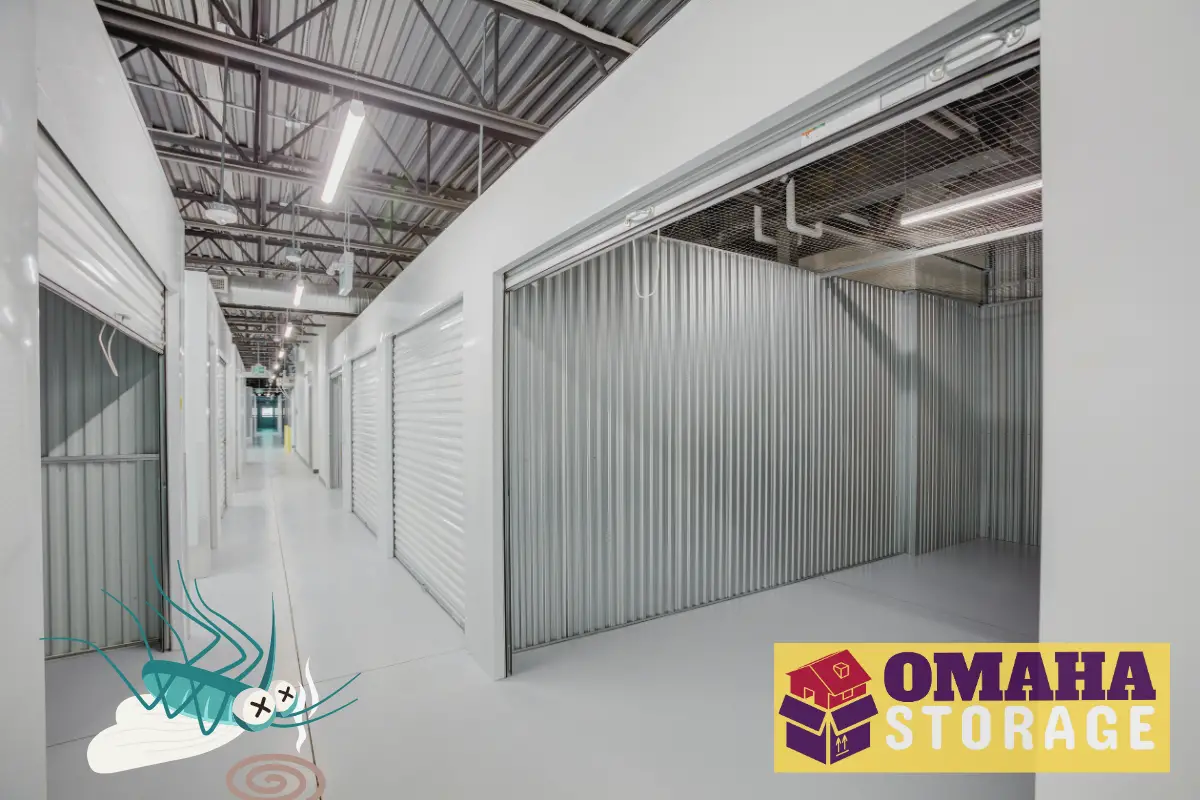Protecting your belongings in a storage unit is crucial, especially when it comes to preventing pests and how to prevent mold in storage containers.
Most storage centers take care of preventing pests and mold in the overall center. However, you might want to also take additional steps in your unit to ensure pests and mold go elsewhere.
With proper maintenance and care, you can keep your stored items in pristine condition.
In this guide, we’ll explore essential tips for maintaining a pest-free, mold-free storage unit, ensuring your possessions stay safe and clean.
1. Keep it Clean and Tidy
Before storing your items, ensure they’re clean and free of dirt, food particles, and moisture.
A tidy storage unit discourages pests and mold from taking up residence.
Regularly clean your storage unit to maintain a healthy environment and prevent infestations.
2. Choose a Climate-Controlled Unit
Climate-controlled storage units help regulate temperature and humidity, deterring mold growth and making the space less attractive to pests.
These units are especially useful for storing items sensitive to temperature and moisture changes.
3. Properly Pack Your Belongings
Using quality packing materials and sealing your boxes will keep pests and moisture at bay.
Avoid using cardboard boxes, which can attract pests and are prone to water damage. Instead, opt for plastic containers with tight-fitting lids.
4. Store Items Off the Ground
Elevating your belongings on pallets or shelves minimizes the risk of water damage and discourages pests from nesting underneath your possessions.
This additional airflow also helps prevent mold growth.
5. Use Desiccants and Moisture Absorbers
Place desiccants, such as silica gel packets, inside your storage containers to absorb excess moisture.
You can also use moisture absorbers like calcium chloride or charcoal to maintain a dry environment and prevent mold growth.
You can find larger moisture absorbers at Walmart in the RV section.
The use of moisture absorbers for storage units can be a game-changer in maintaining the integrity of your possessions, especially in damp climates. By inhibiting humidity in the storage unit, these absorbers help prevent the growth of mold, rust formations and other moisture-related types of damage.
6. Regularly Inspect for Pests and Mold
Perform routine checks of your storage unit for signs of pests or mold. Look for droppings, chewed items, or mold growth on walls and stored items.
When it comes to preserving your valued possessions, it’s crucial to consider threats like storage in mold, which can lead to heart breaking damage. If your things are around this kind of situation, it can cause them to degrade quickly — which really points out the importance of a clean and dry storage unit.
Promptly address any issues you discover to prevent further damage.
7. Use Pest Repellents
Utilize natural or chemical pest repellents to deter insects and rodents from entering your storage unit. Essential oils, like peppermint or lavender, can be effective against some pests. However, if you have a severe infestation, consider using professional pest control services.
8. Avoid Storing Perishable Items
Food and other perishable items attract pests, so avoid storing them in your unit. If you must store food, ensure it’s sealed in airtight containers and regularly checked for spoilage.
9. Maintain Proper Ventilation
Good air circulation is essential for preventing mold growth. Keep your items spaced apart, allowing air to flow between them. If your storage unit has vents, make sure they’re not obstructed.
10. Use Mold-Resistant Storage Materials
Invest in mold-resistant materials like plastic containers and moisture-resistant fabrics to protect your belongings from mold.
Avoid using materials that easily retain moisture, such as cardboard or natural fibers. This will make for a good mold self storage solution to prevent dampness and microbial growth on stored items.
11. Keep Gutters and Drainage Systems Clean
If your storage unit is part of a larger facility, ensure that gutters and drainage systems are clean and functioning properly. This helps prevent water damage and mold growth in your unit.
12. Regularly Replace Weatherstripping
Check the weatherstripping around your storage unit’s door for wear and tear.
Replace it as needed to maintain a tight seal, preventing moisture and pests from entering your space.
13. Avoid Overpacking Your Unit
Overpacking your storage unit can restrict airflow and promote mold growth. Maintain a well-organized space with enough room for air to circulate between your items. This also makes it easier to spot potential pest or mold issues.
14. Use Mold-Resistant Paint
If you’re allowed to modify your storage unit, consider applying mold-resistant paint to the walls.
This special paint contains antimicrobial additives that help prevent mold growth on painted surfaces.
15. Communicate with Facility Management
Stay in touch with your storage facility’s management team. Inform them of any pest or mold issues you encounter and work together to develop a solution.
They may have additional resources or strategies for maintaining a clean, safe storage environment.
In conclusion, protecting your belongings from pests and mold in a storage unit requires proactive measures and ongoing maintenance.
By following these tips, it demonstrates how to prevent mold in storage containers.
Remember, a well-maintained storage unit not only safeguards your possessions but also provides peace of mind.


